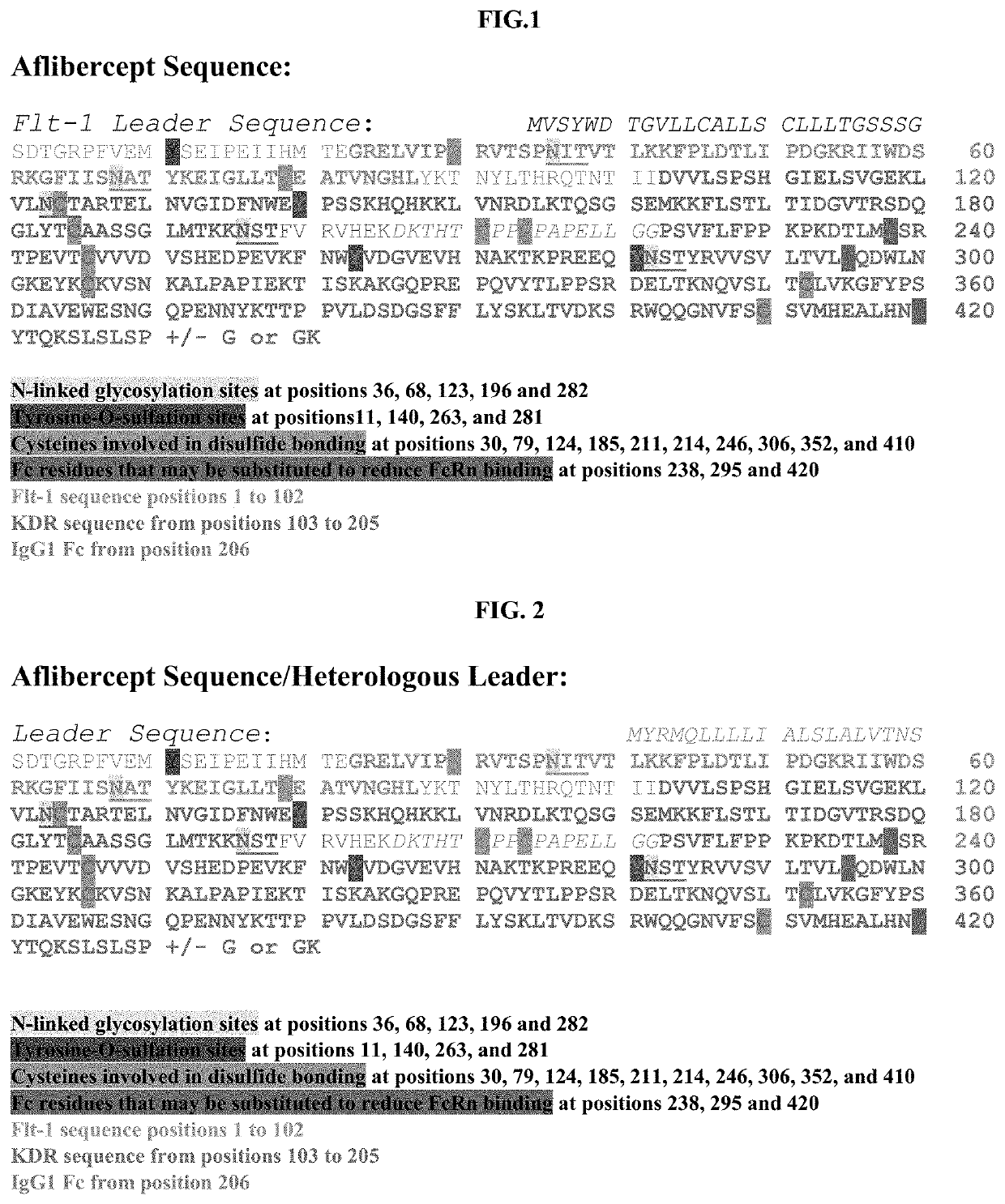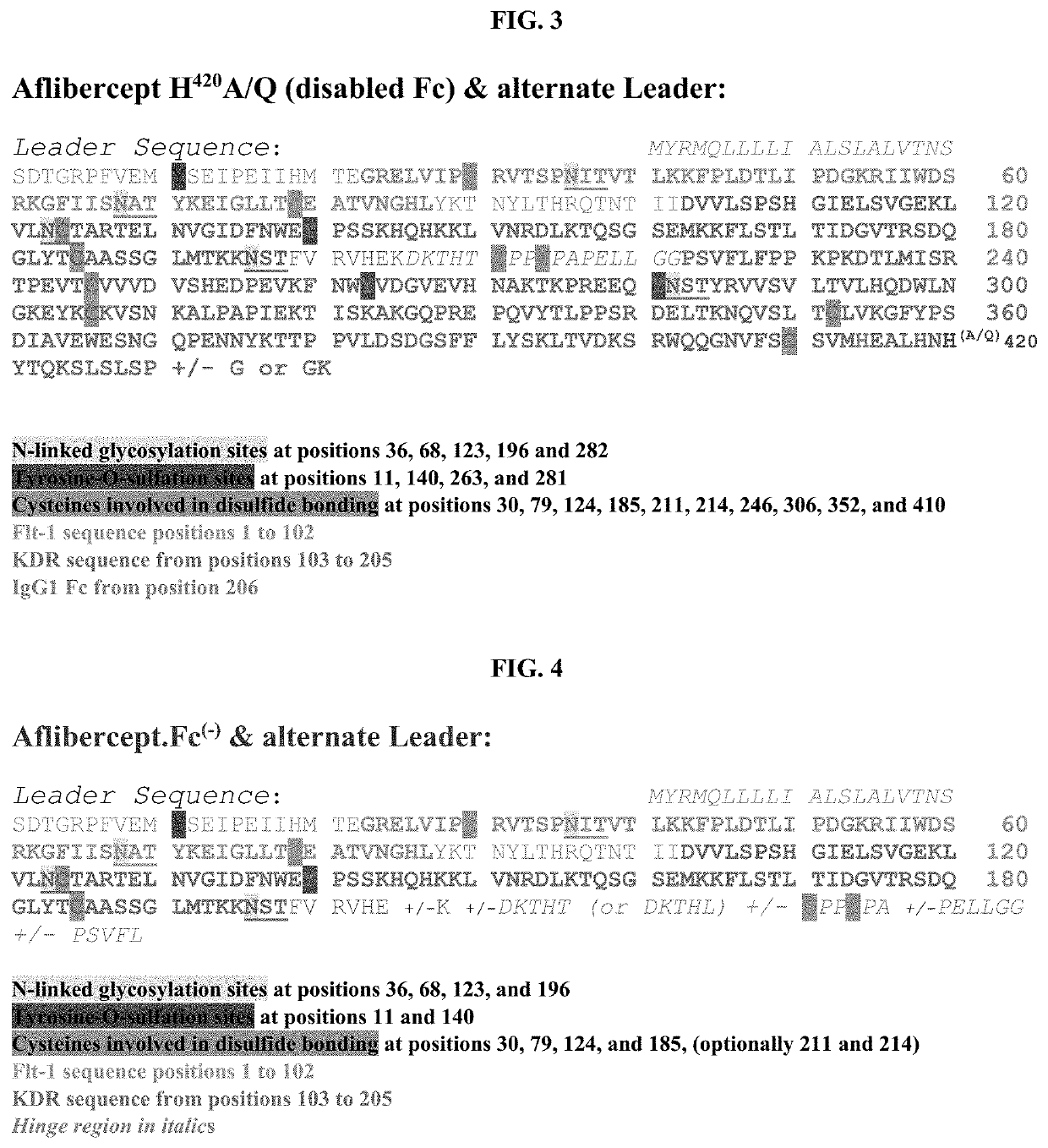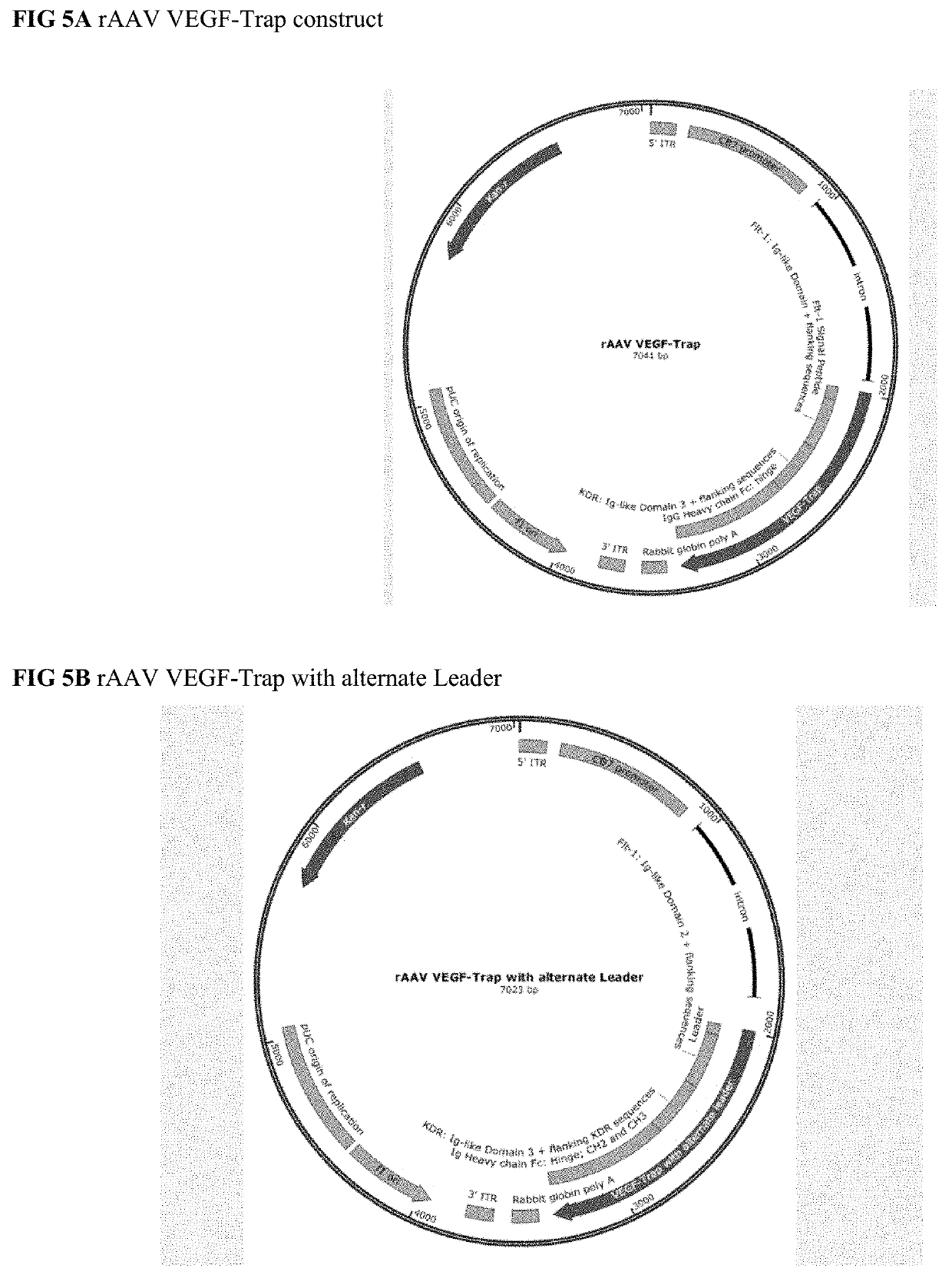Treatment of ocular diseases with human post-translationally modified vegf-trap
a technology of vegf-trap and ocular disease, which is applied in the direction of growth factor/regulator receptors, peptides, viruses, etc., can solve the problems of affecting the normal retinal structure, and forming leaky vessels, so as to prolong the systemic maintain stability and residence in the eye, and reduce the half-life of the transgene produ
- Summary
- Abstract
- Description
- Claims
- Application Information
AI Technical Summary
Benefits of technology
Problems solved by technology
Method used
Image
Examples
example 1
6.1 Example 1
Aflibercept cDNA (and Codon Optimized)
[0301]An aflibercept cDNA-based vector is constructed comprising a transgene comprising a nucleotide sequence encoding the aflibercept sequence of SEQ ID NO: 1 with the Flt-1 signal sequence MVSYWDTGVLLCALLSCLLLTGSS_SG (SEQ ID NO: 36) (see FIG. 1). The transgene sequence is codon optimized for expression in human cells (e.g., the nucleotide sequence of SEQ ID NO: 2 or SEQ ID NO: 3). The vector additionally comprises a ubiquitously active, constitutive promoter such as CB7, or optionally, a hypoxia-inducible promoter. A map of the vector is provided in FIG. 5A.
example 2
6.2 Example 2
Aflibercept with Alternate Leader
[0302]An aflibercept cDNA-based vector is constructed comprising a transgene comprising a nucleotide sequence encoding the aflibercept sequence of SEQ ID NO: 1 with leader sequence MYRMQLLLLIALSLALVTNS (SEQ ID NO: 38) (amino acid sequence provided in FIG. 2). The transgene sequence is codon optimized for expression in human cells (for example, the aflibercept amino acid sequence, minus the leader sequence of SEQ ID NO: 2 or SEQ ID NO: 3) The vector additionally comprises a ubiquitously active, constitutive promoter such as CB7, or optionally, a hypoxia-inducible promoter. A map of the vector is provided in FIG. 5B.
example 3
6.3 Example 3
Aflibercept with “Disabled Fc” (H420A; H420Q)
[0303]An aflibercept cDNA-based vector is constructed comprising a transgene comprising a nucleotide sequence encoding the aflibercept sequence of SEQ ID NO: 1 except that the histidine at position 420 (corresponding to position 435 in the usual numbering of the Fc) is replaced with either an alanine (A) or a glutamine (Q) and encoding an N-terminal leader sequence MYRMQLLLLIALSLALVTNS (SEQ ID NO: 38) (as set forth in FIG. 3). The transgene sequence is codon optimized for expression in human cells. The vector additionally comprises a ubiquitously active, constitutive promoter such as CB7, or optionally, a hypoxia-inducible promoter. Maps of the vector is provided in FIGS. 5C (alanine substitution) and 5D (glutamine substitution).
PUM
| Property | Measurement | Unit |
|---|---|---|
| volume | aaaaa | aaaaa |
| volume | aaaaa | aaaaa |
| volume | aaaaa | aaaaa |
Abstract
Description
Claims
Application Information
 Login to View More
Login to View More - R&D
- Intellectual Property
- Life Sciences
- Materials
- Tech Scout
- Unparalleled Data Quality
- Higher Quality Content
- 60% Fewer Hallucinations
Browse by: Latest US Patents, China's latest patents, Technical Efficacy Thesaurus, Application Domain, Technology Topic, Popular Technical Reports.
© 2025 PatSnap. All rights reserved.Legal|Privacy policy|Modern Slavery Act Transparency Statement|Sitemap|About US| Contact US: help@patsnap.com



